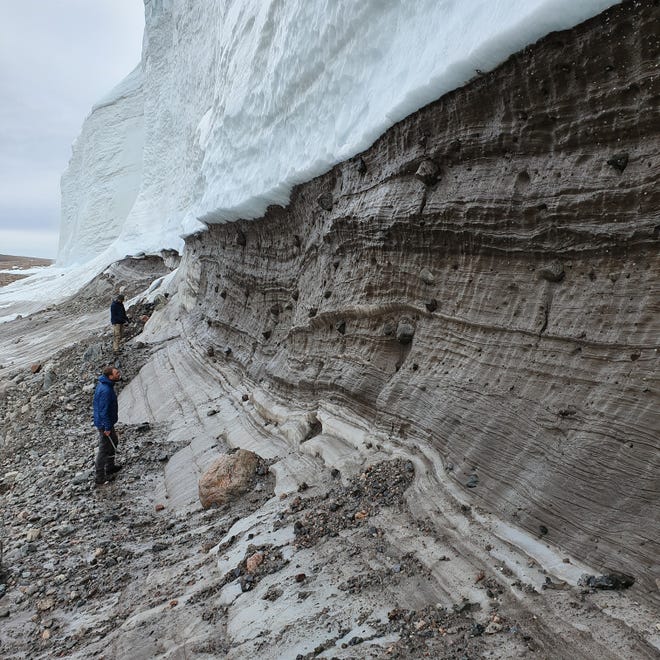New research published Wednesday in the peer-reviewed scientific journal reports that the massive 19-mile-wide Hiawatha Crater under the northwest Greenland ice sheet is millions of years older than previously thought. science progress.
The crater, which is large enough to swallow Washington, DC, was first discovered in 2015 and is presumed to have formed about 13,000 years ago. However, the new research indicates that the crater may have formed 58 million years ago when a meteorite struck the Earth.
The impact had the force of a million atomic bombs and collided with Greenland, which was covered in a temperate rainforest and not the ice and snow that cover the largest island in the world today.
The new discovery was made by the Statens Naturhistorisk Museum and the Globe Institute at the University of Copenhagen, as well as the Swedish Museum of Natural History in Stockholm.
Analysis of sand and stone grains from Hiawatha crater helped scientists determine the actual age of the crater. The samples were analyzed and the sand grains were heated with a laser until argon gas was released which was used to reveal the age of the crater.

“I used a laser to release argon gas that has accumulated in sand grains by radioactive decay of a rare isotope of potassium known as potassium-40,” said Michael Storey, one of the lead scientists on the study. “The argon gas was then measured on a very sensitive instrument known as a mass spectrometer, which allowed me to determine the age of the grains. It’s a bit like carbon dating but with this technique we can determine the age of the oldest rocks on Earth.”
Another dating method, known as lead-uranium, was used to help confirm the age of the crater. Gavin Kenny, another lead scientist on the study, said he analyzed the stones from the crater for the mineral zirconium and used them to determine their age.
fact check:Greenland is still losing ice. There is no reversal of direction
Uranium turns into lead over time, and Kenny said by understanding this process, scientists can determine when zircon crystals form in stones by looking at the ratio of uranium and lead in these crystals.
The strength of the new research, Kenny said, is how scientists use these two dating methods to confirm the crater’s age. “It makes us really confident in what we’ve dated.”


